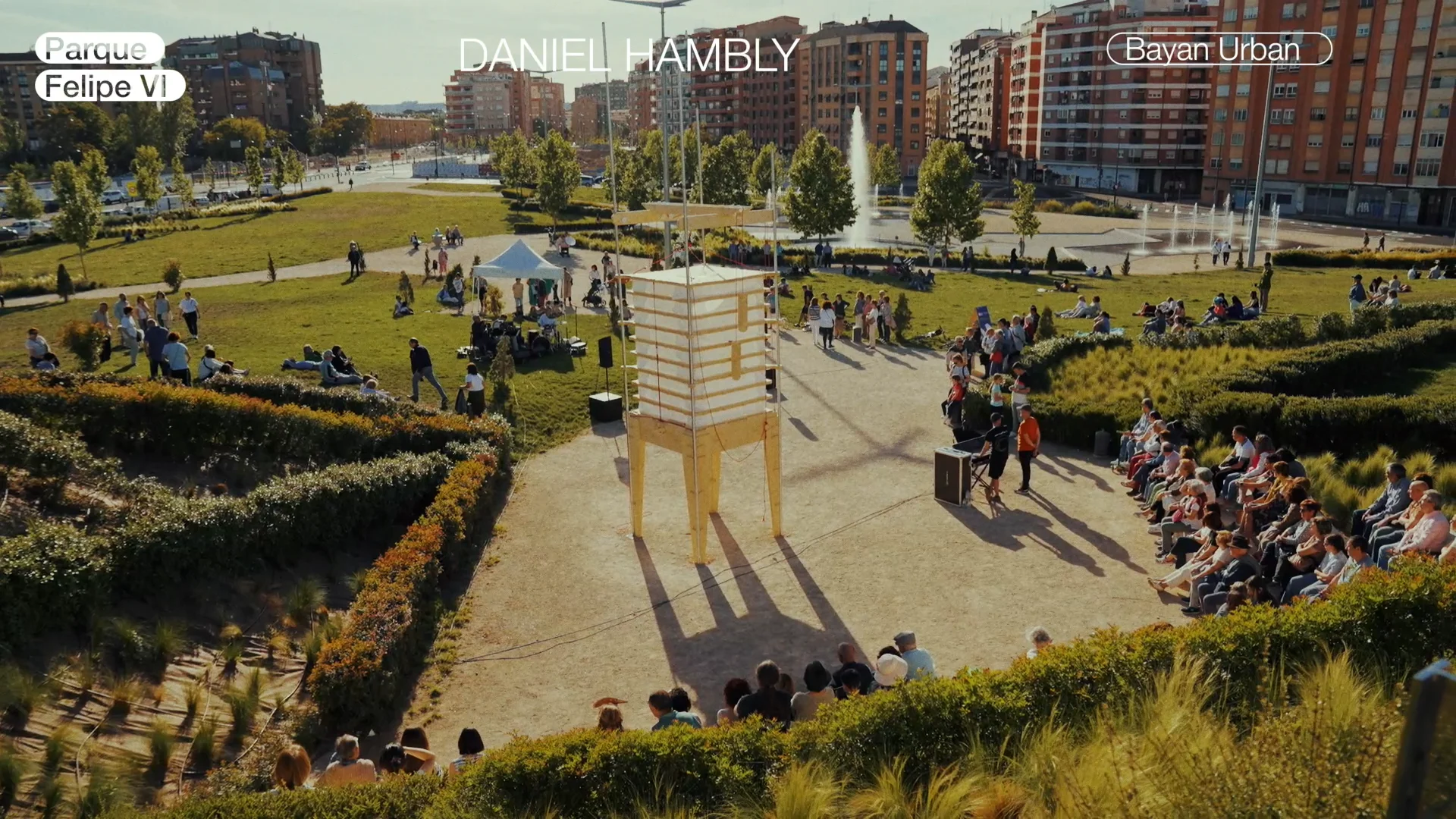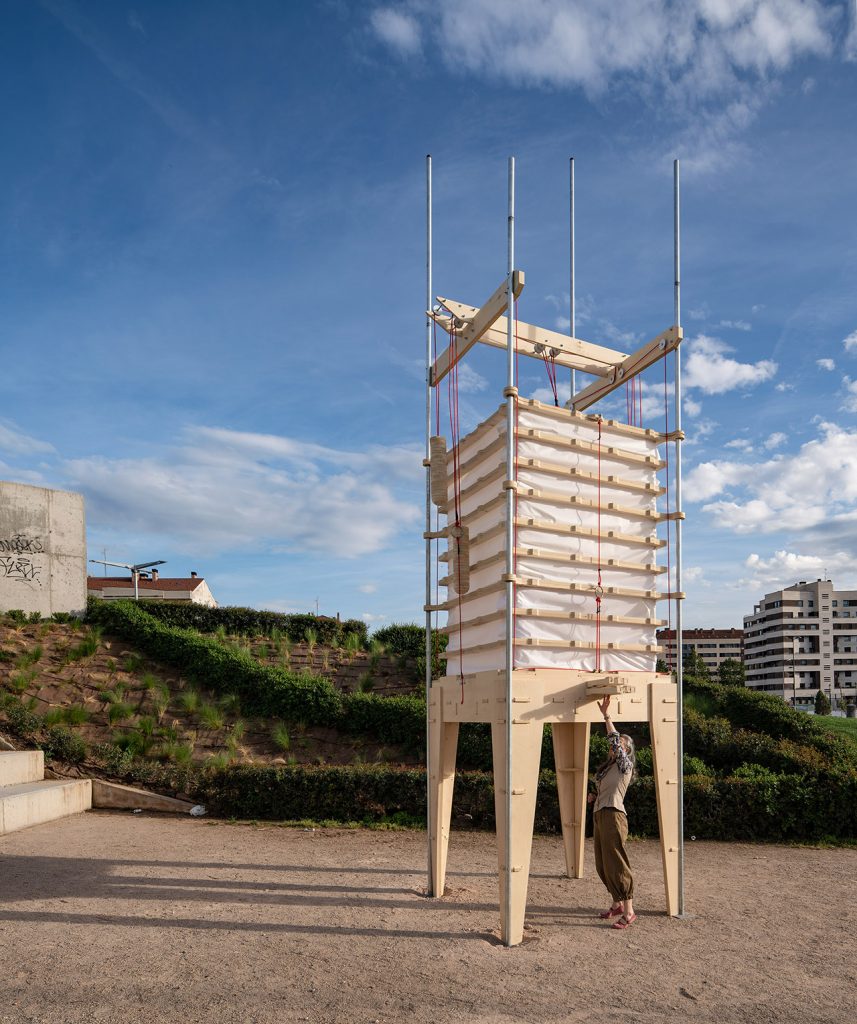Bayan Urban
Daniel Hambly
Parque Felipe VI – Concéntrico 09
Although thought to have originated in central Europe, the accordion went on to have a special significance in Eastern Europe, Asia and Latin America. In the Soviet Union, it became the core instrument of folk and contemporary music. It was a device that was appropriated into the multiple cultures that existed within soviet society. Each made it their own with new variants being created, tailored to the music of particular regions, with the Bayan becoming popular in Russia and Ukraine – it being unique in its sound and chromatic construction. Ultimately, the accordion brought these cultures closer together at the same time as allowing them to celebrate their differences. The Trikiti is also what links Spain to this part world…
The proposal takes advantage of the site both as an amphitheatre and as a transport hub, tapping into the multiple layers of infrastructure directly below and around the stage. Motion sensors around the site operate the motors within the instrument that allow air through the flutes. Different types of movement are assigned to a note or chord. The natural rhythms of these movements come together to create melodies and sounds that become unique of that time and place.
The instrument is designed to be played by two people, one pulling the rope to raise the bellows, the other to lower. The weighted mechanism means only a light pull is required, allowing anyone to operate it. The interaction between these two people is what brings the proposal to life, they do not need to be able communicate verbally but have to work together to allow the music of the city to be heard.
The Bayan Urban becomes as statement of peace and mutual understanding, it shows the power of music to bring people together as well as a means to celebrate the melodies and rhythms of a particular place.















